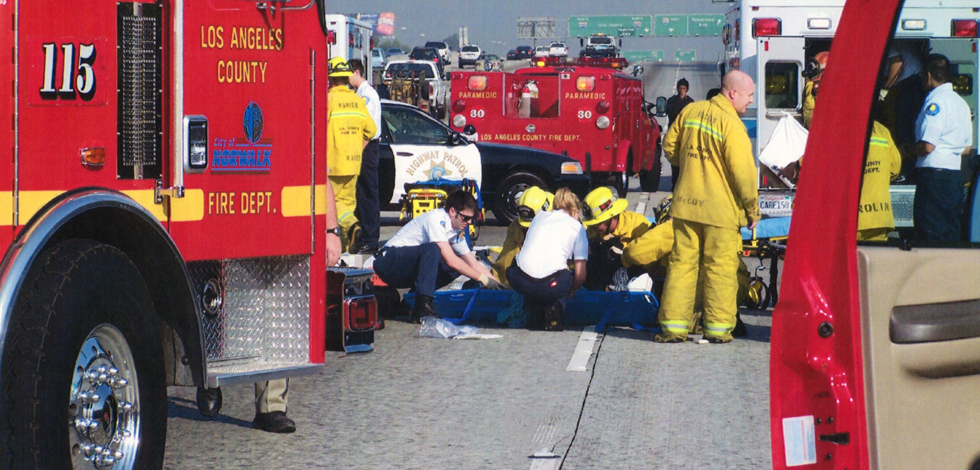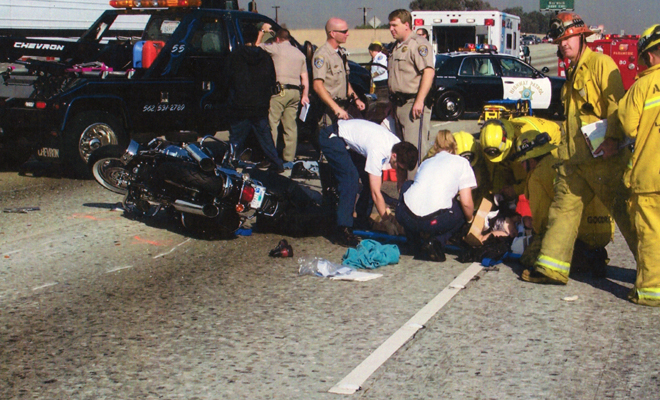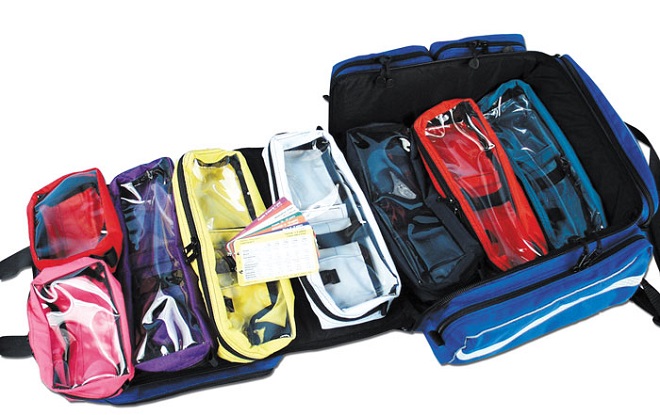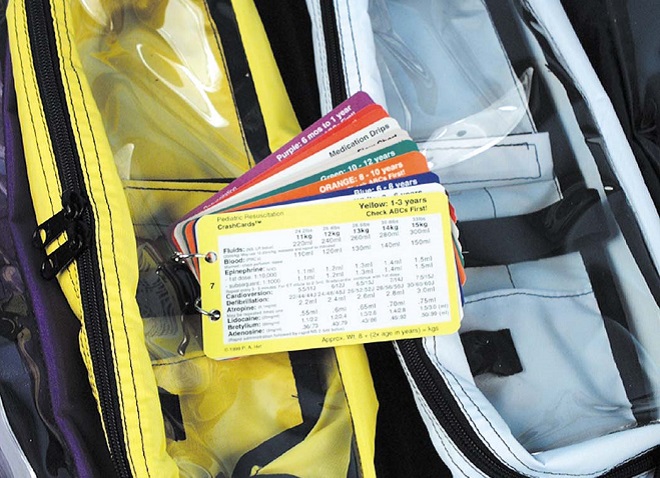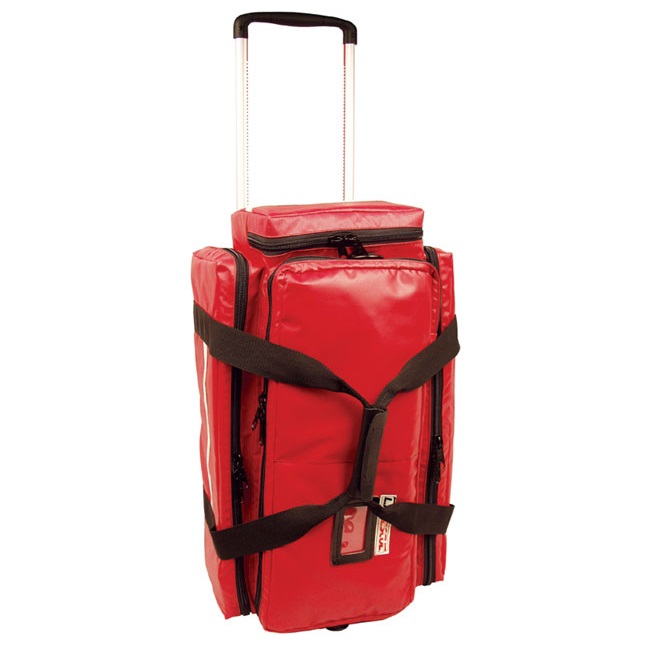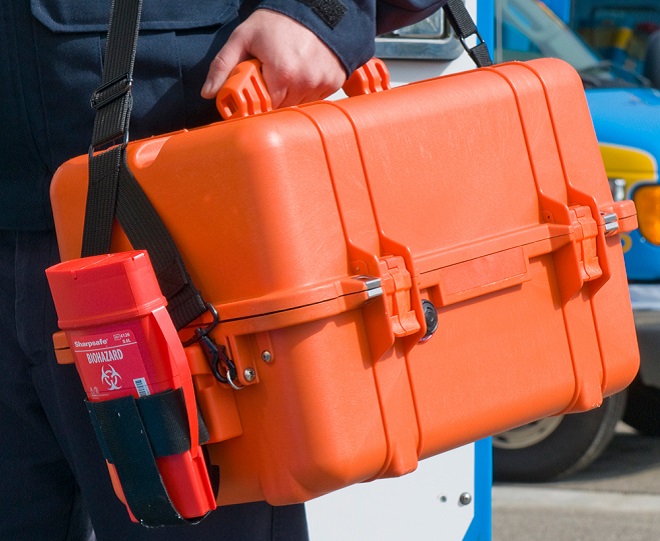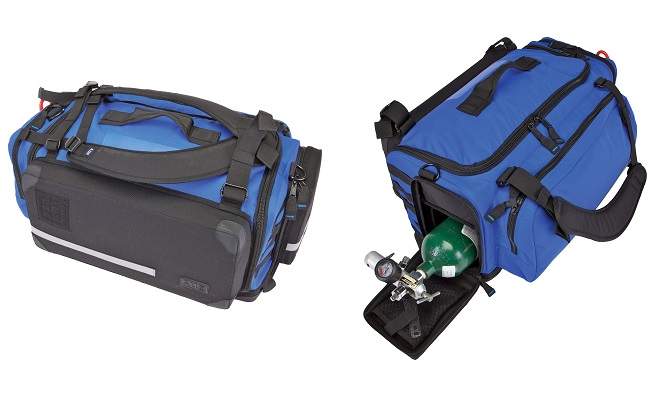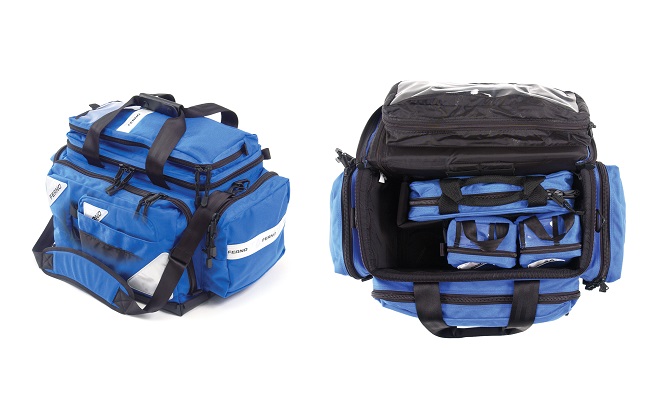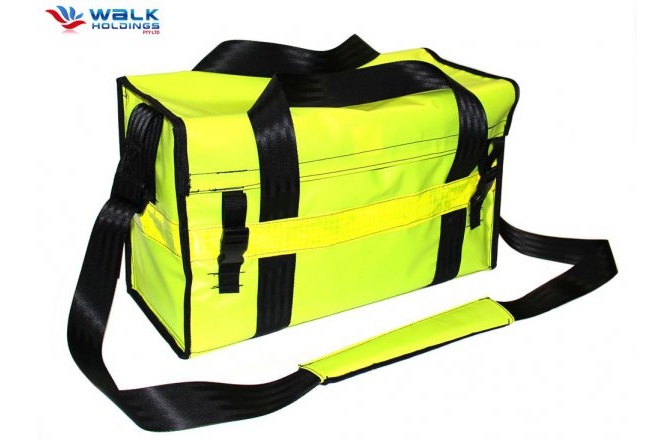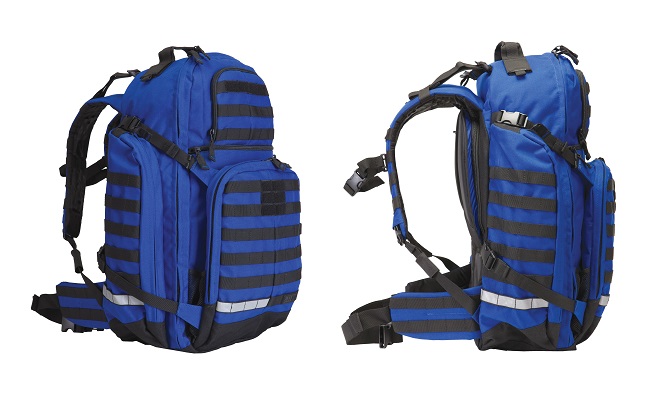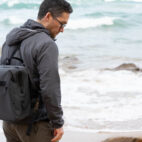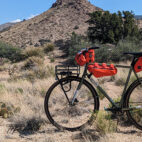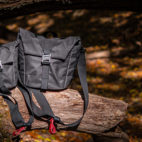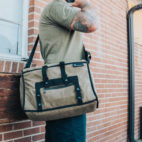The Carry-Minded EMT
It’s 2pm on an overcast day. My partner and I are parked in front of Starbucks. Our ears perk up as the dispatcher announces our call sign over the radio: “3308?” We reply and the dispatcher starts reading us a 911 call. “3308 Traffic Collision at [censored location], passenger ejected from vehicle.”I flip on the lights and sirens, pull into traffic, and stomp on the pedal. The diesel engine roars as the tail pipe pushes out a cloud of soot. We make our way down the main boulevard in our jurisdiction, dodging clueless drivers and crossing through red lights. Both of us know this is going to be an intense call.
As we pull on scene my partner and I quickly survey the situation. Front and center is an old Toyota pickup resting precariously on its roof – wheels still spinning. A family sedan is sitting about 100 feet away with the front end completely smashed. One of these vehicles ran a red light. In the street about 50 feet from the pickup is a boy, perhaps high school age, lying in a growing pool of his own blood. We’re still driving but I can see his eyes are open. Lifeless. He’s clearly suffering from a skull fracture. My first impression: he was an unrestrained passenger in the bed of the pickup.
As I step down from the ambulance I can feel bits of metal and plastic under my boots. There’s a hint of coolant and motor oil in the air. A crowd is gathering on the curb at all corners of the intersection. The Sheriff Department is diverting traffic and California Highway Patrol is cuffing what appears to be the father of our patient. A fire engine is already on scene and a paramedic rescue is pulling up behind us.
My partner rushes to the back of the rig and pulls out the gurney while I grab our gear bag. As we’re walking towards the boy I can hear his mother screaming in horror as a deputy struggles to console her. Getting closer it’s clear he’s hanging on by a thread. His clothes are torn to shreds and his skin is covered in abrasions. By the way he’s dressed it looks like he was on his way home from church. His body is lifeless and he’s lost so much blood I can smell the iron.
My brain is working overtime to cope with what I’m seeing. No matter how many calls I’ve run, it’s still horrific to witness the point when a person stops responding to the world around them. But I don’t have the luxury of time if my team and I are going to turn things around. So I take a deep breath and open up my gear bag. It’s time to go to work.
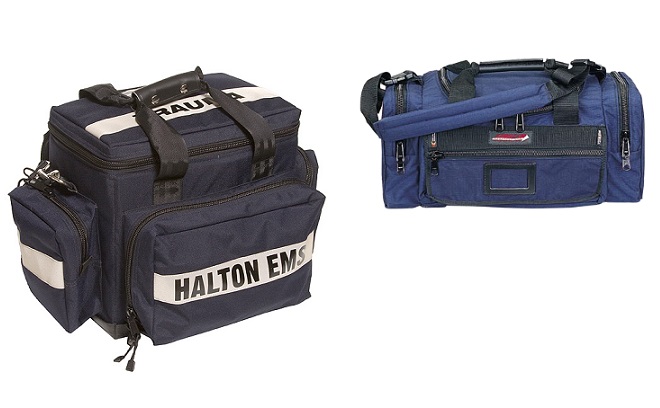
History
For six years I worked in the South Eastern part of Los Angeles County as an Emergency Medical Technician. I patrolled some of the most infamous neighborhoods in LA including the unincorporated portions of Compton, South Central, Long Beach, and nearly 30 other communities. Thankfully, most days were nothing like the story I’ve shared. Calls like that happened maybe 1% of the time. The bulk of my experience involved waiting countless hours sitting in the ambulance and doing homework. When something finally did happen, it was usually benign like a 911 call for stomach pain or a strung out homeless guy who had a little too much fun. The grittiness of the neighborhoods I worked meant there was always some amount of drama and friction, but nothing a firm tone couldn’t manage.
It was during this time that I had first realized the value of quality carry gear. Before working in the field, all I needed from a bag was to hold a laptop. It didn’t matter what it was made from or how thoughtfully it was built, it just had to look cool. But after using bags on 911 calls as an EMT, I realized that good-quality carry is another tool – and good tools help multiply your performance. Unfortunately I was stuck with a pretty poor-quality bag during my time as an EMT, but I made due and found myself window shopping on my days off for better gear.
About EMS carry
When I was working in the field, carry gear for Emergency Medical System professionals was centered on two key bags: the ALS and BLS bag. The ALS bag, or Advanced Life Support bag, is exclusively for paramedics and EMT-Intermediates. These are the bags the public is most accustomed to seeing in movies and shows. They’re filled with a dizzying array of medications, IV equipment, and advanced airway management tools to treat complex medical ailments. When it comes to treating traumatic injuries, EMS professionals reach for another bag: The BLS bag. The Basic Life Support bag is used by both paramedics and EMTs, and is filled with all of the basics for EMS professionals to treat a broad range of traumatic medical complaints. They’re often filled with bandages, simple airway management tools, splints, oxygen, and other goodies. Sometimes agencies will combine or divide the ALS and BLS bags to make hybrid bags, like an O2 bag, an airway bag, a spinal immobilization bag, etc. These hybrid bags are often created to fit a regional niche like dense urban environments, industrial neighborhoods, or repetitive 911 call types.
Whether it’s an ALS or BLS bag, most agencies I’ve observed use the tried and true duffle bag. Simple, efficient, reliable. But there are no rules on what works best and I’ve heard of everything from rolling luggage to heavy Pelican Cases – even modified fishing tackle boxes. Sometimes the choices are driven by funds. Sometimes by tradition. But in all cases, there are consistent hallmarks of what makes an ideal EMS bag.
Hallmarks of a good EMS bag
Whether it’s an ALS or BLS bag, good EMS carry is marked by a few key features.
Organization
Seems like a no-brainer, but a shocking number of EMS bags in service have little to no organization. Frankly, that’s unacceptable. We have too much gear to just throw everything into a catch-all compartment. When I was working in the field I had one of these minimal organization bags. I did my best to tame the chaos with rubber bands, binder clips, and other office supplies, but it was rarely effective. In the end, I just had to spend precious time digging for things. It shouldn’t be like that. The quicker I can get to my equipment, the better chance high risk patients have at surviving.
Thankfully, the EMS equipment industry has plenty of well-organized bags to choose from. As long as the local EMS provider is willing to pay for it, there are great choices available to EMTs and paramedics alike. Nearly all the major EMS equipment companies have done their homework to find out what emergency medical providers value in the field. Perhaps one of the best offerings I’ve seen is by a highly respected name in public safety gear: 5.11 Tactical.
The Responder BLS 2000 Bag is by far one of the most intuitively organized bags I’ve seen. Nearly everything an EMS professional would need to treat a trauma patient is organized, clearly visible, and within easy reach. As a nice touch, 5.11 Tactical added molle webbing on the bag’s exterior pockets for expandability. It even has a concealed compartment for a D-size O2 tank. This bag is a serious piece of carry gear and would require little or zero learning curve to get used to.
5.11 Tactical definitely has tried-and-true organization mastered, but there are other ways to effectively arrange EMS bags. Something I noticed while working in the field is that, although you have to keep a huge number of supplies in your gear bag, the gear can be organized based on different medical emergencies. As an example, if you have a patient with an arm fracture, you can safely assume that a splint, roller bandages, ice pack, tape, and shears will be used. By combining these medical equipment pieces together you can create a sort of modular treatment system to reduce on-scene clutter and equipment chaos. And since many medical emergencies have overlapping equipment needs, one grouping of equipment is capable of treating several different types of injuries.
Ferno EMS, another well-respected name in the industry, ran with this modular treatment system and developed a high-quality medic bag. The Professional ALS Bag is specifically designed to allow multiple smaller pouches to be contained within a larger bag. When confronted with a given medical emergency, simply pull out the right pouch and you’re ready to rock. You can even toss a modular pouch to another EMT or paramedic on scene so you and your crew can work simultaneously but not trip over each other reaching into the same bag.
Materials and cleanup
Even if some of us have never come closer to an EMS professional than a TV show, I’m sure we all have some idea of what demands they put on their gear. High quality, long-lasting materials like Cordura nylon are important ingredients in EMS bag construction so things don’t fall apart. It should come as no surprise that the same stuff trusted by the US military is VERY effective at resisting wear in emergency medicine – that’s why nearly every EMS bag on the market is built with it.
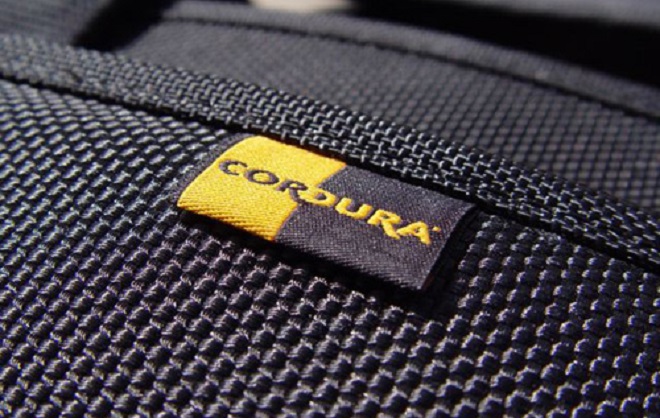
Unfortunately, durability isn’t the whole picture for EMS bags. Deep cleaning and decontaminating are also regular tasks EMS professionals do daily – sometimes hourly. And woven fabrics, like Cordura, are a nightmare to clean. Blood, vomit, and other bodily fluids regularly get trapped in the textured surface of the fabric – or worse, they become ‘wicked’ into the strands of the fabric and have to be scrubbed out. More than once I’ve had to use a decontamination shower or an industrial washing machine to clean blood from woven nylon equipment.
That’s where materials like tarpaulin come in. Reinforced plastic coated fabrics such as tarpaulin are FANTASTIC at resisting fluid absorption. Not only are they smooth, they’re also very resilient to harsh decontaminants and my personal favorite material to deal with on a daily basis. When I was working, it was regular practice to use a bleach solution to decontaminate our equipment – which was nasty stuff. More than once I noticed the bleach stripping the color out of the woven fabrics used in our bags. But the tarpaulin gear bags we had took it like champs. The bummer with tarpaulin is it doesn’t seem to hold up to long-term abuse quite as well as the woven nylon fabrics. Nearly all of the tarpaulin gear bags I used as an EMT had cracks, holes, or the rubberized coating had worn down to the reinforcement threads. Sure, they were always in one piece, but they were no longer easy to clean – which is the whole point behind using tarpaulin. In contrast, the woven nylon bags were always in one piece and never threadbare.
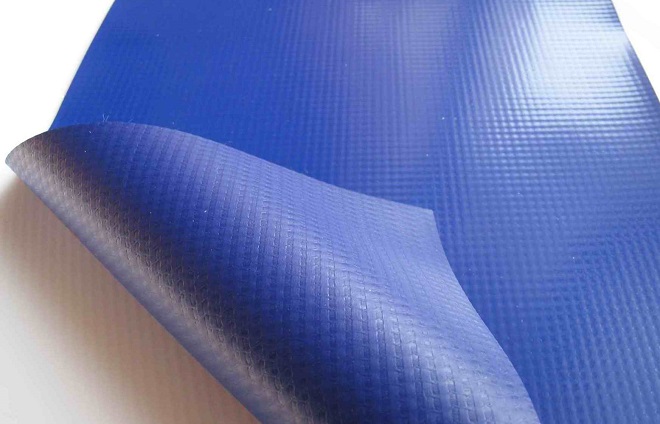
MERET, another noteworthy EMS bag maker, has taken one of their most impressive bags and offered it in full tarpaulin. The OMNI PRO BLS/ALS System is an all-in-one ALS and BLS bag. Designed for EMS crews running with minimal manpower, this bag lets one person carry everything an EMT and paramedic would need to do their job. And the tarpaulin material option makes for easy decontamination when the call is over. It’s not very attractive, but definitely a serious workhorse.
Adaptability
Moving away from materials, there are other hallmarks of a good-quality EMS bag, such as adaptability. Given the rate engineering and technology are advancing, it’s highly likely that there will be profound improvements in equipment and treatment options for future EMS workers. For example, in the six years I was working in the field, the agency I worked for implemented dashboard cameras, AEDs, navigation systems, hydraulic gurneys, high output diesel engines, and tablet PCs to replace paperwork. Imagine what another six years will bring. Because of this, a great bag should have the ability to adapt to changes in the industry. One of the best ways to accomplish this is with options to add on extra equipment. Whether it’s molle webbing, discreet nylon loops coupled with carabiners, D-rings, or some other proprietary system, it’s important for EMS bags to be able to accept new equipment and gear as it arrives. Admittedly, molle webbing makes decontamination more difficult, but given the choice I would take adaptability any day.
Safety
Another feature that is extremely important with EMS bags is the use of high-visibility fabrics. One of the first rules they teach new EMS professionals about is scene safety. If you get hurt while helping someone else, you’ve made everything worse. Since EMS professionals generally don’t have to worry about combat protection like law enforcement, or flame and heat protection like firemen, the bulk of their safety needs can be met just with high-visibility gear and nitrile gloves. Most of the high-visibility pieces I see in EMS bags are simple iron-on reflective stripes, which are fine, but bag makers can do better. Those reflective stripes really work best at night, which leaves safety in daylight fair game. I’d really like to see more high-visibility panels being added to help keep EMS professionals safe during daylight and to distinguish them from law enforcement.
Walk Holdings of Australia has a great example of a high-visibility rescue bag dialed up to 11. Although designed for mine rescue operations (not to mention painful to look at), it’s exactly the type of high-visibility features EMS providers could benefit from.
Configuration
The last element that makes for a good EMS bag are the ways it can be carried. Since the bulk of bags on the market are simple duffle bags, you’ve got the option to carry it in your hands or with the shoulder strap. But any seasoned EMS professional can tell you that at some point you’ll need more ways to carry. Most of my experience was working in suburban neighborhood so I was never far from my ambulance. Because of this, a simple shoulder strap worked great 99% of the time. But when calls would get dicey, it was absolutely critical that I could have my hands, arms, and shoulders free. More than once I had to juggle an IV bag, a loaded gurney, cardiac monitor, and a BLS duffle bag.
I did my best to improvise but there’s only so many things you can manage before you have to make a second trip. Things could also get dicey if a patient was combative. On those calls, you need all the mobility you can get otherwise you could get clocked. Because of those experiences, my personal favorite configuration is the backpack style. No matter what type of call I was running, there was always room on my back.
Perhaps the nerdiest but most impressive EMS bag with backpack straps is the Responder 84 ALS Backpack from 5.11 Tactical. Derived from their Rush series of tactical backpacks, this thing is built like a military pack and completely covered in molle webbing – goes to show you can’t have too much molle! If I’m being honest, it’s total overkill for an EMT or medic in an urban or suburban environment. From the look of the bag, I’d be willing to bet this thing is not easy to get on and off in a hurry. But if I were working a concert, event, or responding to a backcountry emergency on foot – I wouldn’t want anything else carrying my equipment.
Another approach I have yet to see is the development of hooks to hang an ALS or BLS bag from the gurney. And why not? Most of them can handle well over 500 lbs. The one I had in the field could handle 750 lbs and was hydraulic! So piling on another 20 or 30 lbs for an EMS bag is a drop in the bucket. No doubt this is easier said than done – especially considering the enormous variation of ambulance gurneys in service. But perhaps some enterprising bag maker will come up with a way to streamline it.
–
After several years of debating whether to get my paramedic license, I eventually decided to abandon EMS and finish my engineering degree. The dysfunctional and militaristic emergency medical system in Southern California broke my spirit. That same dysfunctional system is the reason I ended up with a crappy BLS bag on my ambulance. Instead of embracing and exploring innovation my supervisors would often say, “A good carpenter doesn’t blame his tools. Make it work, EMT Foster.”
But I never viewed my experience as a waste or a dead end. I knew what I was getting into. I was an outsider in their world and I fully understood that my insatiable need to question things would clash with their ‘follow orders’ dogma. Instead I took it as a big slice of humble pie. A cold hard look at what the world is really like when you strip away all the superficial bits. And a rude realization of just how chaotic, fragile, and magnificent the world we live in really is. Rich or poor. Smart or dumb. Sinner or saint. At some point we all will need an ambulance.
As for the boy, he succumbed to his overwhelming injuries and died at the hospital. His father, the driver, was arrested by CHP because his son didn’t have a seatbelt in the bed of the truck. He was charged with child endangerment.





 Carry Awards
Carry Awards Insights
Insights Liking
Liking Projects
Projects Interviews
Interviews
